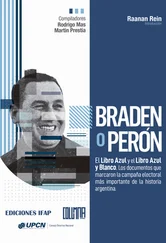27 V. Voinovich, ‘Glavny tsenzor’ ( http://www.voinovich.ru/home_reader.jsp?books8.jsp).
28 Lyakhovski A, Tragedia i doblest Afgana, Moscow 1995 ( http://www.rsva.ru/biblio/prose_af/afgan_tragedy_and_glory/index.shtml); R. Keeble and J. Mair (eds.), Afghanistan, War and the Media: Deadlines and Frontlines (London 2010), p. 87.
29 Varennikov, Nepovtorimoe , p. 308. The Politburo record has been widely reproduced—for example, by Alexander Lyakhovski—and in other memoirs and histories of the war.
30 D. Gai and V. Snegirev, Vtorzhenie (Moscow, 1991), pp. 192, 190, and 175. Sakharov’s ‘Open Letter to Brezhnev’ is at http://www.uic.unn.ru/ads/biography/txt1.htm.
31 A. Chernyaev, Sovmestny iskhod: Dnevnik dvukh epokh 1972–1991 gody (Moscow, 2008), diary entry for 5 February 1979, p. 391.
32 Gai and Snegirev, Vtorzhenie , p. 207.
33 National Security Archive, Afghanistan: Lessons from the Last War , Vol. II, Document 15, 12 November 1981, translated by Svetlana Savranskaya ( http://www.gwu.edu/~nsarchiv/NSAEBB/NSAEBB57/soviet.html).
34 A. Volkov, ’40-aya Armia: Istoria sozdania, sostav, izmenenie struktury’ ( www.rsva-ural.ru/library/?id63).
35 Gai and Snegirev, Vtorzhenie , p. 204.
36 Maiorov, Pravda ob afganskoi voine , pp. 5, 154, and passim.
37 National Security Archive, Afghanistan: Lessons from the Last War , Vol. II, Document 20, 13 August 1987, translated by Svetlana Savranskaya ( http://www.gwu.edu/~nsarchiv/NSAEBB/NSAEBB57/soviet.html).
38 Rastem Makhmutov, interview, Moscow, 27 May 2007.
39 Alexander Gergel, email to author, 23 September 2009.
40 Lyakhovski and Nekrasov, Grazhdanin, politik, voin , pp. 213–14.
41 Gai and Snegirev, Vtorzhenie , p. 207.
42 Private information.
43 V. Plastun and V. Andrianov, Najibulla: Afghanistan v tiskakh geopolitiki (Moscow, 1998), p. 2.
Part III: The Long Goodbye
1 This much shortened translation of one of Igor Morozov’s most famous songs is printed with his kind permission. When it was first published the military censorship insisted on changing ‘O mighty land for which we fought/Can you now dry our mothers’ tears?’ to ‘O distant land, Afghanistan,/Can you now dry our mothers’ tears?’ in an attempt to shift the blame for the war away from the Soviet government.
1 See A. Dyshev, PPZh: Pokhodno-polevaya Zhena (Moscow, 2007).
2 V. Krivenko, Ekipazh mashiny boevoi (St Petersburg, 2004), p. 9.
3 Ibid., p. 378.
4 This description of how to clean your uniform is in S. Aleksievich, Zinky Boys (New York, 1992), p. 50.
5 Ibid., p. 50.
6 Krivenko, Ekipazh mashiny boevoi , p. 372.
7 This description of a typical regimental morgue is based on Dyshev, PPZh , pp. 28–38; S. Nikiforov, Bez vsyakikh pravil (St Petersburg, 2008), p. 99; G. Koroleva, ‘Dvadtsat mesyatsev v adu’, Daryal , No. 3, 2001 ( http://www.darial-online.ru/2001_3/koroleva.shtml).
8 Blinushov kept notes on these incidents, which he wanted to work up into a book. But someone told the KGB, who confiscated all the material he had gathered together: A. Blinushov, ‘Cherny Tiulpan’ ( http://www.reznik.pri.ee/document.php?Id108).
9 A. Smolina, ‘Vsem devushkam, letavshim v afganskom nebe’ ( http://artofwar.ru/s/smolina_a/text_0080.shtml).
10 Yu. Lapshin, Afganski dnevnik (Moscow, 2004), p. 95.
11 These figures are taken from Appendix 13 of A. Lyakhovski, Tragedia i doblest Afgana (Moscow, 1995) ( http://www.rsva.ru/biblio/prose_af/afgan_tragedy_and_glory/index.shtml). Though there are a number of soldiers named Viktor in the list who served with the mujahedin, none is easily identifiable with the young man referred to by Alla Smolina.
12 V. Snegirev, Ryzhy (Moscow, 2000), pp. 257–304.
13 Los Angeles Times , 17 December 1991; A. Kalinovsky, ‘A Long Goodbye: The Politics and Diplomacy of the Soviet Withdrawal from Afghanistan, 1980–1992’, PhD thesis, London School of Economics, 2009.
14 Report at www.dtic.mil/dpmo/sovietunion/jcsd.htm; article in UralPress. ru of 17 April 2007 ( www.uralpress.ru/art111069); record of 19th Plenum of the US-Russia Commission ( http://www.dtic.mil/dpmo/sovietunion/AARVer319thPlenum.pdf).
15 See http://ru.wikipedia.org/wiki/ _ _ _ - ; NewsRU.com report of 27 September 2006 ( www.newaru,com/russia/27se02006/afgan.html).
16 See http://www.komitet92.com/index.html; http://www.komitet92.com/12poisk.html.
17 Komsomolskaya Pravda , 13 February 2009; FontankaRu reported on 13 February 2009 that 417 soldiers had gone missing or been taken prisoner during the war. Of 119 who had been liberated, ninety-seven had returned to the Soviet Union. The remainder had stayed abroad ( www.fontanka.ru/2009/02/13/031/).
18 Krivenko, Ekipazh mashiny boevoi , p. 345.
19 Stepanov’s story is in TrudRu , No. 206, 8 November 2006 ( www.trud.ru/article/08–11–2006/109556_afgandkij_plennik.html).
20 Article in Vlast , No. 6 (809), 16 February 2009 ( www.kommersant.ru/doc.aspx?DocsID116089&printtrue).
21 Nikolai Bystrov, interview, Moscow, 31 May 2007.
22 101st Motor-rifle Regiment website ( http://101.int.ruindex.phpoptioncom_content&taskview&id204<emid5).
23 Private information.
24 Interfax-AVN, 29 December 2009, quoted in Johnson’s List, No. 35, 31 December 2009.
25 S. Pakhmutov, ‘Badaber—neizvestny podvig’ ( www.rustrana.ru/article.php?nid8803).
26 V. Ablazov, Dolgi put iz Afganskogo plena: Stranitsy iz knigi ( http://www.fond-dobrobut.org.ua/download/1991modzaxedmoccba.doc).
27 This account of the rising is based on the 2009 film Myatezh v Preispodnei ; S. Golesnik, ‘Nadezhda ne umiraet’, Soyuz: Belarus-Rossia , No. 406, 21 May 2009 ( http://www.rg.ru/2009/05/21/propal-soldat.html); Pakhmutov, ‘Badaber—neizvestny podvig’; Vladimir Snegirev, interview, Moscow, 3 March 2010. The details are fragmentary and contradictory.
12: The Road to the Bridge
1 Record of Andropov at Politburo meeting on 7 February 1980 from Archive of the President of the Russian Federation, fond 3, opis 82, delo 75, pp. 1–4: kindly provided by Svetlana Savranskaya.
2 Much of what follows is based on A. Kalinovsky, ‘A Long Goodbye: The Politics and Diplomacy of the Soviet Withdrawal from Afghanistan, 1980–1992’, PhD thesis, London School of Economics, 2009. Kalinovsky’s account of the Soviet withdrawal is the most scholarly and lucid so far. See also A. Lyakhovski, Tragedia i doblest Afgana (Moscow, 2004).
3 D. Cordovez and S. Harrison, Out of Afghanistan (Oxford, 1995), p. 65.
4 Kalinovsky, ‘A Long Goodbye’, quoting V. Zubok, A Failed Empire: The Soviet Union in the Cold War from Stalin to Gorbachev (Chapel Hill, NC, 2007), p. 267.
5 O. Sarin and L. Dvoretsky, The Afghan Syndrome: The Soviet Union’s Vietnam (Novato, CA, 1993), p. 123.
6 Cordovez and Harrison, Out of Afghanistan , p. 123.
7 A. Chernyaev, Sovmestny iskhod: Dnevnik dvukh epokh 1972–1991 gody (Moscow, 2008), diary entry for 30 March 1985, p. 614; Kalinovsky, ‘A Long Goodbye’.
8 V. Kryuchkov, Lichnoe delo , 2 vols. (Moscow, 1996), Vol. 1, p. 223.
9 Among those who promoted the idea of a Gorbachev surge was W. Odom, The Collapse of the Soviet Military (New Haven, Conn., 1998), p. 103. The sources Odom quotes are unconvincing. Gorbachev himself denies that he had any such intention (Mikhail Gorbachev, conversation, Moscow, 10 March 2010). A more subtle analysis is in J. Prados, Safe for Democracy: The Secret Wars of the CIA (Chicago, 2006), pp. 485–7.
Читать дальше












